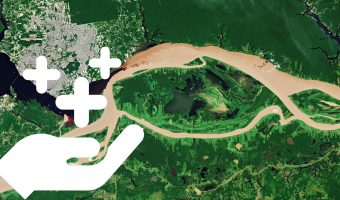
The voice of the Earth Observation
Industry
Barents bloom, Sentinel-2A - processed by ESA, CC BY-SA 3.0 IGO

Discover the largest European
Earth Observation Network
Lake Balkhash, Kazakhastan, Sentinel 2 - processed by ESA, CC BY-SA 3.0 IGO

EARSC promotes the understanding
of our Planet for societal benefits
Brussels, Spot 5 Sqtellite - Airbus Defence and Space
EARSC 4 Pillars

Representing the Members
The core pillar of our activities is to support and promote our members. We achieve this goal mainly through projects which we undertake (see projects). Members’ views are gathered through a series of ad-hoc working groups dedicated to important topics. We inform our members through a monthly report and a dedicated portal about important news and information, as announced bid opportunities – and dedicated e-mails for key items.
Read More
Market development & Internationalization
EARSC is engaged in a wide range of activities to develop new markets and business opportunities for our members. Our strategy is to engage users, identify needs and stimulate demand for European EO services both in Europe and abroad with complementary commercial and geographical approaches.
Read More
Promoting the industry
EARSC employs a range of sophisticated digital tools to promote the European EO sector. EARSC has three main digital tools which cover creating a shared vocabulary (EARSC TAXONOMY) , providing a common space to find EO companies, and a common space to discover ‘online’ EO services.
Read More
Showing the value of Earth Observation
The Earth observation sector delivers a wide range of social and environmental and economic benefits to citizens of Europe and the world. To properly and consistently value these impacts, EARSC leads the Sentinel Benefits Study (SeBS) project in which we measure the total societal impact of products and services coming from Sentinel satellite data.
Read MoreEARSC NEWS
ESA launches new project to protect biodiversity
The world's biodiversity is vanishing at an unprecedented rate ?± around 100 species every day ?± due to factors such as land use change and pollution. Addressing this threat, world governments agreed through the UN Convention on Biological Diversity to reduce significantly the current rate of biodiversity loss by 2010. To support this initiative, ESA has kicked off its new DIVERSITY project. (Source ESA)
Sinequanet Workshop – Germany March 8, 2007
In November 2005, ESA and the European Commission launched Sinequanet. The objective is to build a network able to organise, structure & deliver access to technical facilities, expert support; and training services specifically aimed at the needs of high-technology SMEs who are currently supply, or are looking to enter, the European space industry. (Source Sinequanet)
OGC(R) and Web3D Consortium Agree to Advance Joint Standards
December 19, 2006. The Open Geospatial Consortium, Inc. (OGC) and the Web3D Consortium signed a memorandum of understanding to work together to cooperatively advance standards to support web-based 3D visualization, modeling and simulation.(Source Spatialnews)
OGC Announces Invitation to Qualify for Interoperability Program "IP Team"
The Open Geospatial Consortium Inc. (OGC�) has posted an OGC "Invitation to Qualify" (ITQ) for the OGC Interoperability Program (OGC IP) Pool [http://portal.opengeospatial.org/files/?artifact_id=14559].
GMES Atmosphere Service
The GMES Atmosphere Service Workshop was held on 6 and 7 December at the Belgian Academy Palace in Brussels. The workshop was attended by over 100 participants from 27 countries, several European Commission Directorates General (Environment, Joint Research Centre, Research, Transport and Energy, Enterprise and Industry), European agencies and organisations, such as ECMWF, EEA, ESA, EUMETSAT, as well as key projects funded through European Commission 6th Framework Programme and ESA GMES Service Element activities (GEMS and PROMOTE). (Source GMES.Info)
UK Space Policy
RAS informs Parliamentary Committee of its concern with the poor level of coordination and effectiveness of the current policy. (Source Scienific Frontline)
Green light for FP7 framework research programme for 200
Green light for seventh framework research programme for 2007-2013 The European Parliament gave the go-ahead for the EU’s research and development funding for the period 2007-2013, when MEPs adopted 10 reports relating to the 7th Framework Research Programme (FP7). This programme, the EU’s main instrument for funding scientific research, will have a budget of more
MEMBERS NEWS




